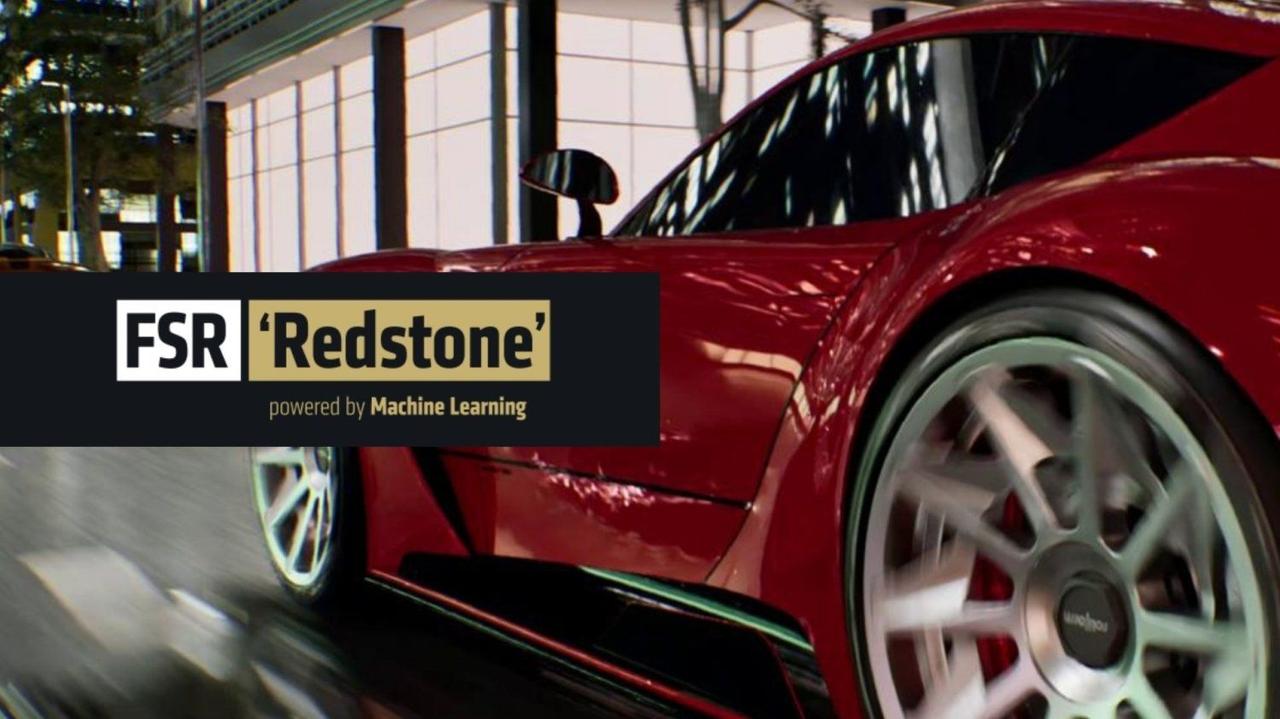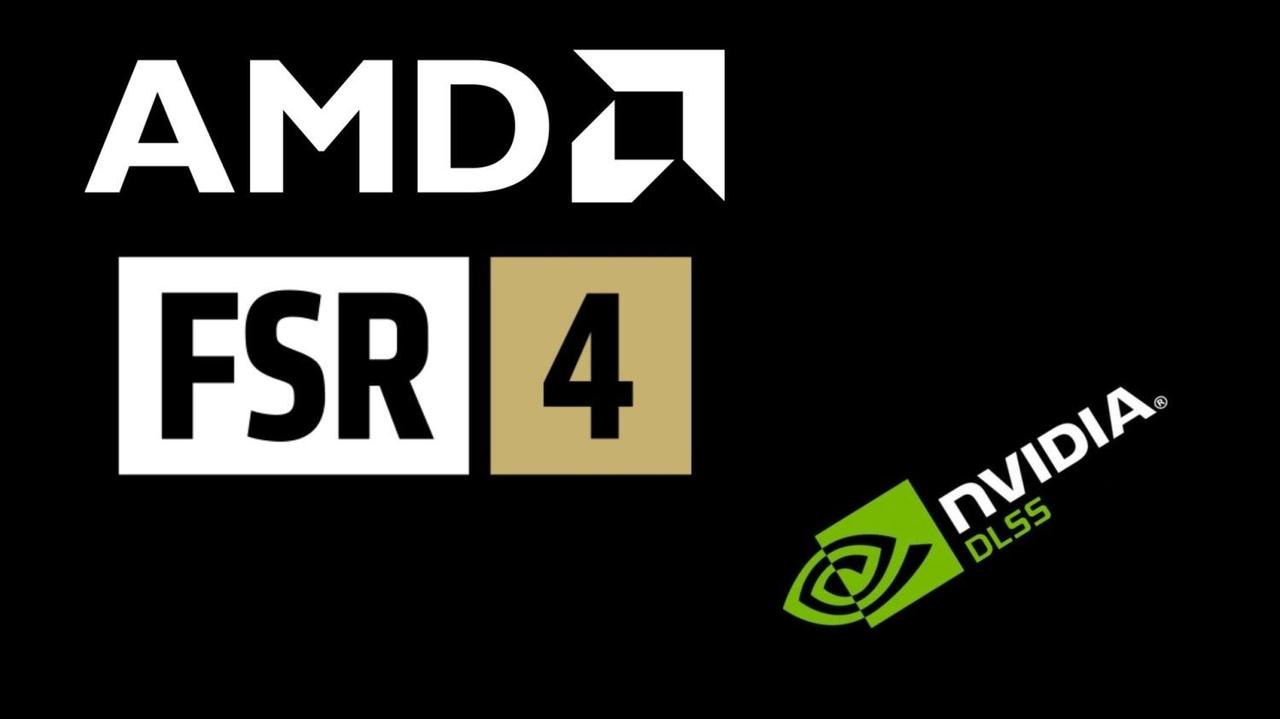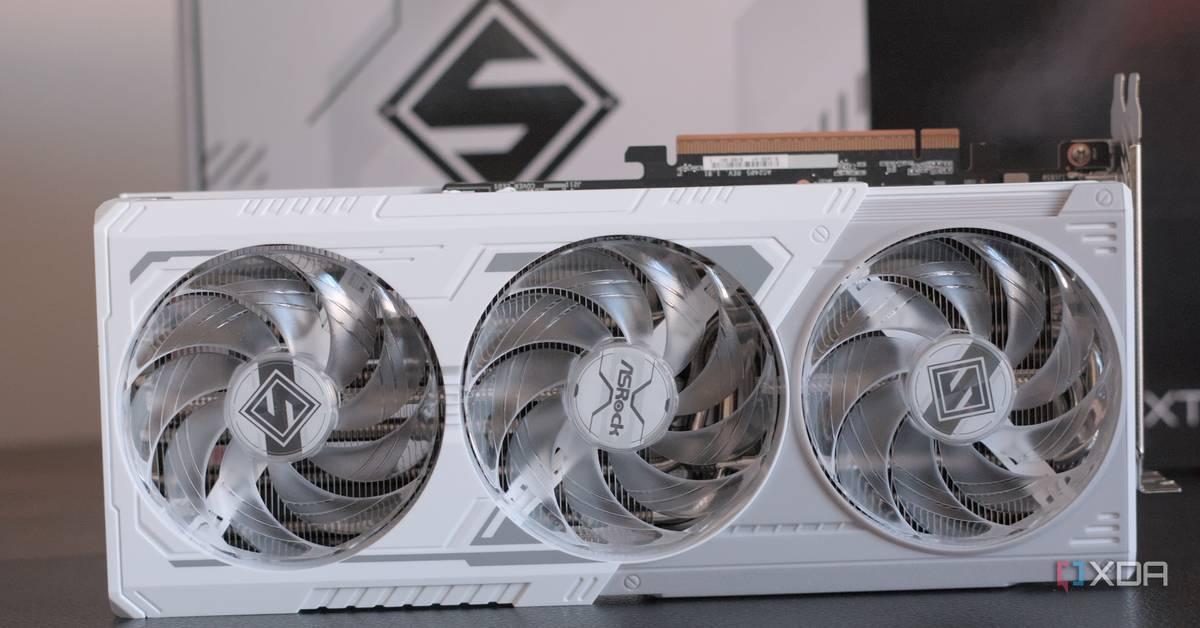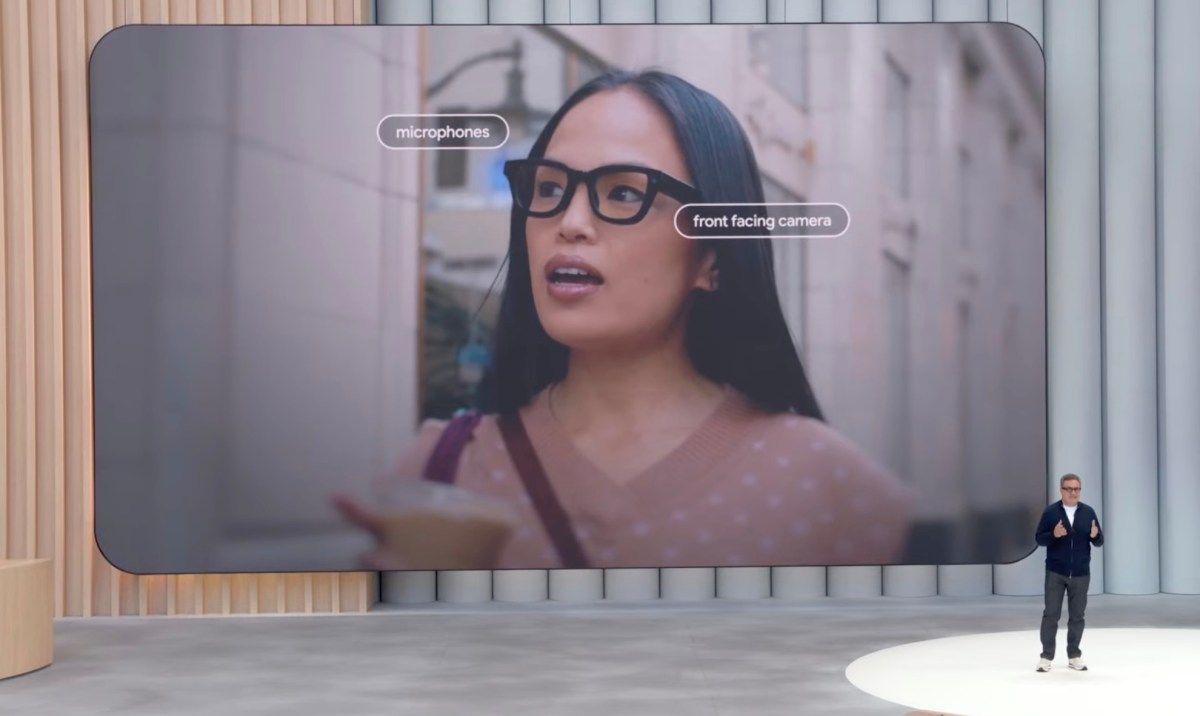AMD's FSR 'Redstone': A Leap Forward in AI-Powered Gaming Graphics
4 Sources
4 Sources
[1]
AMD's mysterious FSR 'Redstone' might make DLSS obsolete
Summary FSR Redstone, launching in 2025, features neural radiance caching, ray regeneration, and AI-driven frame generation. Ray regeneration is AMD's answer to Nvidia's DLSS ray reconstruction, aiming to improve image quality. Redstone will be exclusive to RDNA 4 cards, matching DLSS features and representing a significant upgrade for FSR. AMD is already cooking up the next version of FSR. Despite launching the impressive FSR 4 just a few months ago, a significant update to the performance-enhancing feature suite is in the works for a release in the second half of 2025. It's called Redstone, and although we don't have a ton of details about it yet, AMD laid out several additional features that will be joining the FSR suite that finally match what Nvidia has established with DLSS. Related 4 ways FSR 4 gives DLSS 4 a run for its money FSR is no longer an afterthought for gamers Posts 2 FSR Redstone is a significant upgrade set to arrive this year It matches DLSS on nearly every point There are three new features in FSR Redstone: Neural radiance caching, ray regeneration, and AI-driven frame generation. Starting with the neural radiance cache, this is a feature we first heard about with the launch of Nvidia's RTX 50-series GPUs. It's one of the cornerstones of neural rendering, and it's a significant feature for games that feature path tracing. Instead of tracing every ray for every pixel, the GPU maintains a cache of rays and feeds those samples to an AI model. That model, in turn, can infer thousands of additional rays. It's a shortcut with AI for full-on path tracing. That's a feature mainly targeting future games. The other two features are a bit more relevant to the games we have today. Ray regeneration is what Nvidia calls ray reconstruction in its DLSS suite. Essentially, it replaces the ray tracing denoiser used by games with an AI-driven denoiser. Without going too deep in the technical weeds, an image that's ray-traced in real-time will have some amount of noise; only so many rays are calculated, and they don't all terminate at a light source, leaving some pixels without color information. It looks like a grainy image, and the denoiser steps in to clean up the rough edges. Close The problem is that denoisers built into most games aren't very good, and they often muddy reflections and shadows. If AMD is able to accomplish what Nvidia has with ray reconstruction, you can expect a significant improvement to image quality. Ray reconstruction is the unsung hero of the DLSS suite, and it's great to see the feature come to AMD cards. Finally, AI-driven frame generation, which speaks for itself. FSR 4 features frame generation, but it's not an ML-based implementation. Redstone changes that, hopefully improving the quality of the generated frames. When pressed about Multi-Frame Generation (MFG), which is a feature Nvidia debuted with its RTX 50-series GPUs, AMD's David McAfee said that "it's all steps in that direction." AMD isn't saying if Redstone will have any MFG capabilities, and it certainly doesn't seem that way right now. However, clearly AMD has seen what Nvidia has done with MFG, and it's likely that FSR is working in that direction. Just like FSR 4, the Redstone update will be exclusive to RDNA 4 graphics cards, including the newly-announced RX 9060 XT. Although AMD has gone back and forth on its FSR strategy, it may have finally found its footing. Redstone looks like an update that will match DLSS point-for-point, which is a position AMD has never been in with FSR before.
[2]
AMD FSR4 (Redstone) Gets AI Frame Generation and Ray Tracing Enhancements
AMD's next FSR4 update -- codenamed Redstone -- is landing in late 2025 and it's bringing some pretty neat AI tricks to your gaming rig. If you've been rocking RDNA 4 hardware (think RX 9060 XT, 9070, or 9070 XT), buckle up: this upgrade could give your frame rates a serious boost while making ray-traced scenes look cleaner. So, what's new? First off, frame generation is now fully AI-powered. Previously, FSR would guess the extra frame between two rendered ones using fixed logic. Redstone swaps that out for an AI model that studies the two real frames and creates a new one in between. The result is smoother action, especially in fast-paced sequences, and it can practically double your effective FPS in titles that support it. If you've ever noticed stutter or judder during motion-heavy gameplay, this is aimed squarely at smoothing that out. On top of that, AMD is rolling out two ray-tracing helpers. Neural radiance caching is up first -- it's like a smart shortcut for bouncing light. Instead of firing a zillion rays to figure out indirect lighting, the system learns and remembers light behavior, so you don't need to calculate every single bounce. That saves GPU time without sacrificing realistic illumination. Then there's AI-based ray regeneration, which patches up noisy, grainy areas you often see in real-time ray tracing. The AI model fills in missing rays, cleaning up those speckles so reflections and global lighting look more polished. Integrating Redstone into your game is as simple as updating the FSR plugin, so developers don't have to reinvent the wheel. AMD's general manager, David McAfee, confirmed the process will follow existing FSR deployment methods -- meaning you can drop the new code into your engine pipeline and be up and running without major refactors. The catch? Your GPU needs enough machine-learning horsepower to drive these AI features. That's why AMD is limiting support to the RX 9000 series based on RDNA 4. Earlier cards just don't have the tensor compute necessary for real-time inference. AMD's goal is to close the gap on competing upscaling and ray-tracing technologies, offering an open-source alternative that's easy to integrate and doesn't lock you into a proprietary ecosystem. Keep an eye out for the official SDK release in H2 2025.
[3]
FSR 'Redstone' is AMD's answer to DLSS 4 Ray Reconstruction, Neural Shaders, and Frame Gen
As an Amazon Associate, we earn from qualifying purchases. TweakTown may also earn commissions from other affiliate partners at no extra cost to you. Path Tracing or Full Ray Tracing is widely considered the end game for real-time lightning in games, and it's best to think of it like ray-tracing for everything: shadows, reflections, global illumination, indirect lighting, and more. Naturally, it's extremely hardware-intensive, to the point where, in 2025, it's only possible thanks to AI-powered technologies like DLSS 4. With FSR 'Redstone,' AMD's RDNA 4 GPUs should be able to deliver DLSS 4-like results in games like DOOM: The Dark Ages with Path Tracing enabled. This includes DLSS 4 Super Resolution, Ray Reconstruction, Frame Generation, and, more recently, with the introduction of the GeForce RTX 50 Series, neural shaders like Neural Radiance Cache. This isn't merely a case of AI boosting performance, as DLSS 4's Super Resolution offers a more stable and detailed image than natively rendering a scene. Ray Reconstruction is effectively an AI denoiser, and it dramatically improves the detail you see when turning on ray-tracing. Frame Generation sits on top of all of that. It boosts smoothness and motion clarity while reducing latency, pushing performance into triple-digit territory. At Computex 2025, AMD announced FSR 'Redstone' for its RDNA 4 GPUs, which are due for release in the second half of 2025. It's the company's answer to DLSS 4 and NVIDIA's Path Tracing features. Like we currently see in a couple of DLSS 4 titles, like Half-Life 2 RTX, AMD is implementing Neural Radiance Caching to improve indirect lighting by leveraging AI to infer rays bouncing around a scene, with the GPU left to handle the initial ray bounces. Ray Regeneration is AMD's version of Ray Reconstruction, an AI-based denoiser that improves the image quality and detail of ray-traced lighting effects. From there, FSR 4's new AI-powered Super Resolution recreates the image from a lower resolution input while maintaining the image fidelity of a natively rendered output resolution. Finally, AMD's new Frame Generation uses a new AI model alongside temporal and spatial data to generate frames and boost performance. Sure, this is AMD playing catch-up with FSR 'Redstone,' but this is the sort of technology the company needs to level the playing field, feature-wise, with GeForce RTX, especially when more titles are adding Path Tracing options like DOOM: The Dark Ages. Like FSR 4, these features will be exclusive to the new Radeon RX 9000 Series as they require powerful AI hardware. With RDNA 4 GPUs for PC gaming still relatively fresh on the scene, the good news is that FSR 4 adoption is starting to ramp up nicely, with AMD confirming that FSR 4 will be available in over 60 games by June 5th, just in time for the Radeon RX 9060 XT's launch. Granted, this is still less than half of the games with DLSS 4 support, but it's a good start.
[4]
AMD told us its plan for how FSR will eventually kill DLSS
AMD sees a future where FSR reigns and DLSS is no more. As AMD's Frank Azor explains, this might not be as far-fetched as it sounds. As an Amazon Associate, we earn from qualifying purchases. TweakTown may also earn commissions from other affiliate partners at no extra cost to you. "In the long run, open source wins," Frank Azor says at the end of a lengthy conversation. At Computex 2025, we got the chance to sit down with AMD's Consumer and Gaming Marketing chief to discuss the evolution of FSR 4 and the latest FSR 'Redstone' announcement. FSR 'Redstone' introduces new AI rendering technologies that will rival DLSS 4's impressive AI-powered Ray Reconstruction, Neural Radiance Cache, and Frame Generation for real-time Path Tracing in games. It's due for release in the second half of 2025. "Look at G-Sync and FreeSync," Frank Azor concluded. "It took a while, but FreeSync won. And that's par for the course; it just takes some time." This is where our conversation concluded. He used the open-source nature and widespread adoption of FreeSync as a reference point for how FSR would one day kill DLSS as the go-to solution for Super Resolution and Path Tracing technologies. Of course, there's a lot more to it than that. AMD is well aware that it is playing catch-up to NVIDIA, so to speak, regarding these features. This is where my discussion with Frank Azor on FSR 4 began: about getting these technologies and the AI-powered FSR 4 in more games to match DLSS 4's widespread adoption. FSR killing DLSS Phase One - Open Source and Easy to Implement "Everyone likes the number, but not all games are created equal," Frank Azor tells me. "Not all people are playing the same games, so the number of games (FSR 4 is available in) is not nearly as important as what games you support. If you want to do a competitive analysis, you have to look further than just the 60 versus 125 games number. We went from 30 to 60 in six weeks. The adoption is rapid, and an incredible amount of groundwork has been laid with FSR 1, 2, 3, and 3.1." FSR 4 Super Resolution is widely viewed as a new beginning for the technology, based on its dramatic improvements to image fidelity. However, it is exclusive to RDNA 4 GPUs and requires powerful AI hardware, so it's a good thing the Radeon RX 9000 Series launch has been its most successful to date. "As demand for our graphics cards grows, so does the install base," Frank Azor explains. "And the easier we make FSR to be adopted, the more rapid the adoption. We've made FSR 4 very easy to adopt for developers. I would say that it's the easiest machine learning upscaling solution that's out there on the market today." "We made FSR ubiquitous, open source, easy to adopt, and applicable to not just our graphics cards but also our competitors' graphics cards," Frank Azor continues. "Our competition has almost the exact opposite strategy to that." It's harder to create an open-source solution than something proprietary. And when you arrive late to the party, the adoption rate accelerates. If something is easier to implement, open source, and ubiquitous, the logic is that a game developer would choose that option over something else. "Unless there's incentives to do otherwise," Frank Azor adds, referring to what we assume are development deals for using a specific technology. FSR killing DLSS Phase Two - PlayStation and Project Amethyst Project Amethyst is a collaboration between AMD and Sony to develop machine learning solutions to accelerate performance on PlayStation consoles. PlayStation 5 Pro's AI-based PSSR solution, or PlayStation Spectral Super Resolution solution for upscaling, is the precursor to this Project Amethyst becoming a reality and FSR 4 being integrated into the PlayStation ecosystem. "If you're developing for PlayStation and other platforms, where are you going to allocate your upscaling resources?" Frank Azor asks rhetorically. "The technology that will benefit you across PC and multiple consoles, or apply your resources to a proprietary technology that's not applicable to the console version, and only the PC version. I think that answer is pretty clear." One key advantage AMD has up its sleeve when it comes to the adoption of FSR 4 is that it has been co-developed with Sony for PlayStation and, by extension, future consoles like the upcoming PlayStation 6. Although Frank Azor did the expected thing by not responding to any mention of the PS6 and shifting the conversation, Project Amethyst changes the landscape for how the company traditionally works with hardware partners in the console space. "If you look at the relationship with our partners, historically, they've been very hardware-centric," Frank Azor says. "Hey, we're building this chip, and we're going to power this console. The dialogue has evolved in 2025 to be upscaling and software-centric. I think that gives a good indication of how the future is evolving between the companies." FSR killing DLSS Phase Three - Mission Accomplished? Of course, a few roadblocks are standing in the way of FSR killing DLSS. FSR 4 is currently exclusive to RDNA 4 gaming GPUs due to its AI hardware requirement, and there's no guarantee it will work in its current state on the current PlayStation 5 Pro hardware. This means that the Sony drawcard might not come into effect until the PS6 arrives. So, as of now, DLSS 4 is available to run on exponentially more GPU hardware than RDNA 4 because it works on older GeForce RTX GPUs, which cover the majority of PC gamers. A number that we're guessing even eclipses the current PS5 install base of 77 million. On top of that, NVIDIA will continue to develop newer versions of DLSS and introduce more AI-powered rendering technologies like it is already doing with the GeForce RTX 50 series. Also, as of now, FSR 4 is not open-source like previous versions or available to run on multiple generations of GeForce RTX GPUs. This isn't to say that FSR killing DLSS would never happen, but to highlight that the road might be longer than you'd think. The good news is that AMD is working toward making FSR 4 open-source. "Based on how (FSR 4) is currently programmed, it won't run on anything else as it's honed in on the RDNA 4 architecture," Fran Azor confirms. "But, it's going to be open source. We are going to make it available out there. It's not impossible. I don't think it's impossible. It just requires work, and the work has to get done. We're an open-source company, and that's our strategy."
Share
Share
Copy Link
AMD unveils FSR 'Redstone', a significant upgrade to its graphics technology, introducing AI-driven features to compete with NVIDIA's DLSS 4. Set for release in 2025, Redstone aims to revolutionize gaming performance and visual quality.
AMD Unveils FSR 'Redstone': A New Era in AI-Enhanced Gaming Graphics
AMD is set to revolutionize the gaming graphics landscape with its upcoming FSR 'Redstone' update, scheduled for release in the second half of 2025. This significant upgrade to AMD's FidelityFX Super Resolution (FSR) technology introduces a suite of AI-powered features designed to compete directly with NVIDIA's Deep Learning Super Sampling (DLSS) 4
1
2
.Key Features of FSR 'Redstone'

Source: TweakTown
FSR 'Redstone' brings three major AI-driven enhancements to the table:
-
Neural Radiance Caching: This feature targets games with path tracing, using AI to infer thousands of additional rays from a cache of traced rays. It's a significant advancement for rendering complex lighting scenarios more efficiently
1
3
. -
Ray Regeneration: AMD's answer to NVIDIA's ray reconstruction, this AI-based denoiser aims to improve the image quality of ray-traced effects. It replaces traditional denoisers with an AI-driven solution, potentially offering clearer reflections and shadows
1
2
. -
AI-Driven Frame Generation: Unlike the current FSR 4, which uses fixed logic for frame generation, Redstone employs an AI model to create intermediate frames. This approach promises smoother gameplay, especially in fast-paced sequences, and could potentially double the effective frame rate in supported titles
2
3
.
Exclusive to RDNA 4 GPUs
FSR 'Redstone' will be exclusive to AMD's RDNA 4 graphics cards, including the newly announced RX 9060 XT. This limitation is due to the significant machine learning capabilities required to drive these AI features in real-time
1
2
3
.Competing with NVIDIA's DLSS 4

Source: TweakTown
AMD's FSR 'Redstone' is positioned as a direct competitor to NVIDIA's DLSS 4 technology. By introducing features like Neural Radiance Cache and AI-based ray regeneration, AMD aims to match DLSS 4's capabilities point-for-point
1
3
.Frank Azor, AMD's Consumer and Gaming Marketing chief, emphasized the company's strategy: "We made FSR ubiquitous, open source, easy to adopt, and applicable to not just our graphics cards but also our competitors' graphics cards"
4
.Related Stories
The Road Ahead: Project Amethyst and Console Integration
AMD is not limiting its ambitions to PC gaming. Through Project Amethyst, a collaboration with Sony, AMD is working on integrating machine learning solutions into the PlayStation ecosystem. This move could significantly boost FSR adoption across multiple platforms
4
.Azor highlighted the potential impact: "If you're developing for PlayStation and other platforms, where are you going to allocate your upscaling resources? The technology that will benefit you across PC and multiple consoles, or apply your resources to a proprietary technology that's not applicable to the console version, and only the PC version"
4
.Challenges and Future Prospects
Despite AMD's ambitious plans, several challenges remain. Currently, FSR 4 is available in fewer games compared to DLSS 4. However, AMD reports rapid adoption, with the number of supported games doubling from 30 to 60 in just six weeks
4
.The exclusive nature of FSR 'Redstone' to RDNA 4 GPUs also presents a limitation, as it requires specific hardware capabilities not present in older graphics cards or current gaming consoles
3
4
.As the graphics technology landscape continues to evolve, AMD's push for open-source, cross-platform solutions could potentially reshape the industry. However, NVIDIA's established presence and continuous innovation in the field ensure that the competition in AI-enhanced gaming graphics remains fierce.
References
Summarized by
Navi
[1]
[3]
Related Stories
AMD Unveils FSR 4: AI-Powered Upscaling Technology Exclusive to RDNA 4 GPUs
28 Feb 2025•Technology

AMD's FSR Redstone Brings AI-Powered Frame Generation to Challenge Nvidia's DLSS Dominance
10 Dec 2025•Technology

AMD's FSR 4: AI-Powered Upscaling Exclusive to RDNA 4 GPUs Promises Significant Improvements
07 Jan 2025•Technology

Recent Highlights
1
AI Chatbots Sway Voters More Effectively Than Traditional Political Ads, New Studies Reveal
Science and Research

2
Google AI glasses set to launch in 2026 with Gemini and Android XR across multiple partners
Technology

3
EU Launches Antitrust Probe Into Google's AI Training Practices and Content Usage
Policy and Regulation





